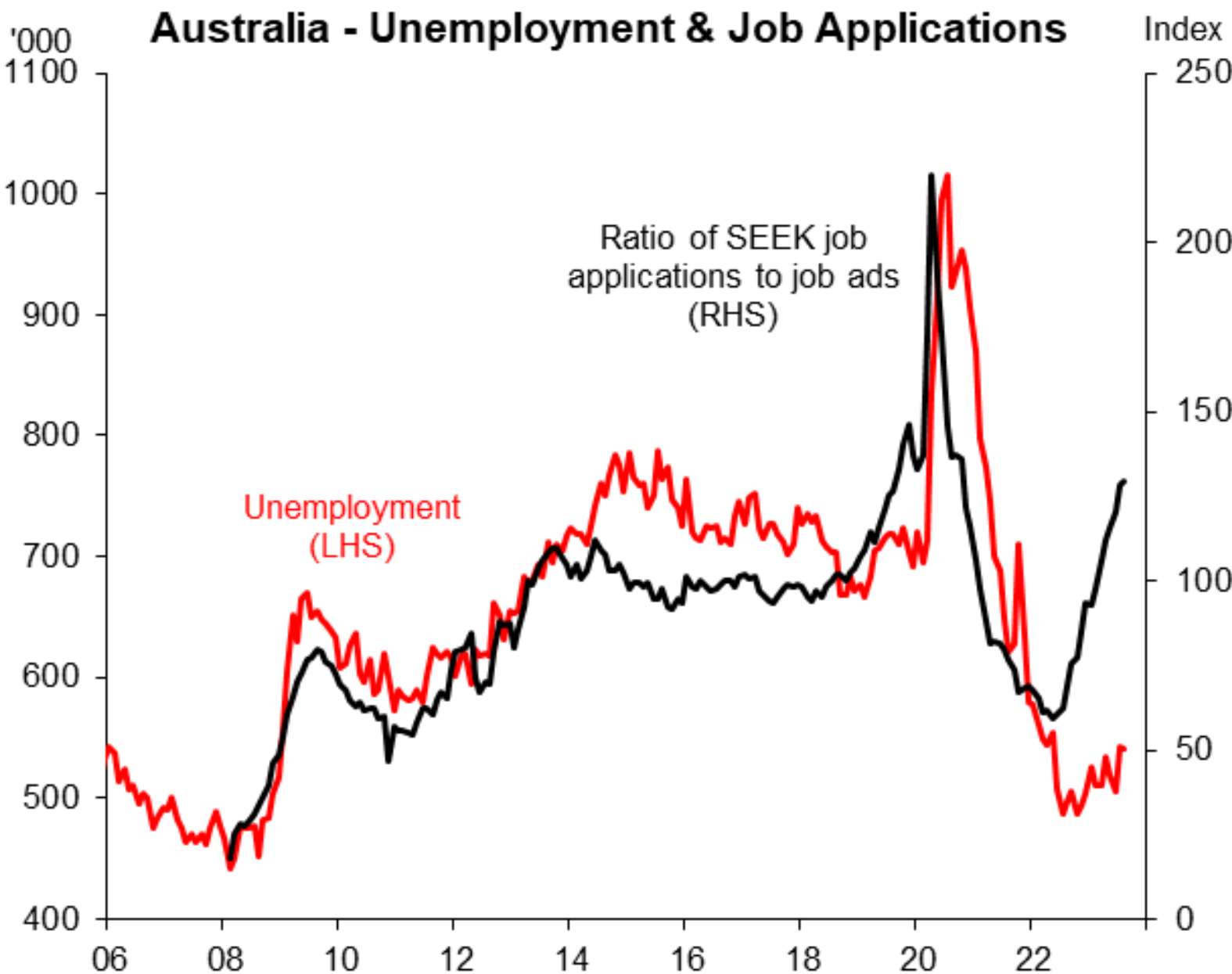Against all other data, the Australian Bureau of Statistics (ABS) has reported a 0.1% decline in the nation’s unemployment rate (to 3.6%) and a 0.2% decline in the underemployment rate (to 6.4%), despite soggy jobs growth of just 6,700 and a reduction in hours worked of 0.4%:

The primary driver of the decline in unemployment was that the labour force participation rate fell by 0.2%.
Below are the key movements in seasonally adjusted terms:
- unemployment rate decreased to 3.6%.
- participation rate decreased to 66.7%.
- employment increased to 14,111,200.
- employment to population ratio decreased to 64.4%.
- underemployment rate decreased to 6.4%.
- monthly hours worked decreased to 1,930 million.
- full-time employment decreased by 39,900 to 9,806,400 people.
- part-time employment increased by 46,500 to 4,304,800 people.
Kate Lamb, ABS head of labour statistics, noted:
“It is important to remember that a fall in unemployment does not always mean much higher employment”.
“The fall in the unemployment rate in September mainly reflected a higher proportion of people moving from being unemployed to not in the labour force”.
“The participation rate fell 0.2 percentage points to 66.7 per cent from last month’s record high of 67.0 per cent but remained well above levels before the COVID-19 pandemic”.
“The recent softening in hours worked, relative to employment growth, may suggest an easing in labour market strength, though it also follows particularly strong growth over the past year. As seen in the Job vacancies data, demand for workers has fallen slightly, but the labour market continues to be relatively tight and resilient”.
The result doesn’t make sense in light of other labour market data, which have reported labour market weakness.
Most notably, SEEK shows that the number of applications per job ad is running well above pre-pandemic levels reflecting both lower labour demand and the record rise in labour supply via immigration:

Source: Justin Fabo (Macquarie Group)
Roy Morgan’s alternative unemployment measure has also lifted by 1.5% over the past year as the record labour supply growth has overrun job demand:

Source: Justin Fabo (Macquarie Group)
In short, the official unemployment report from the ABS no longer makes any sense.

